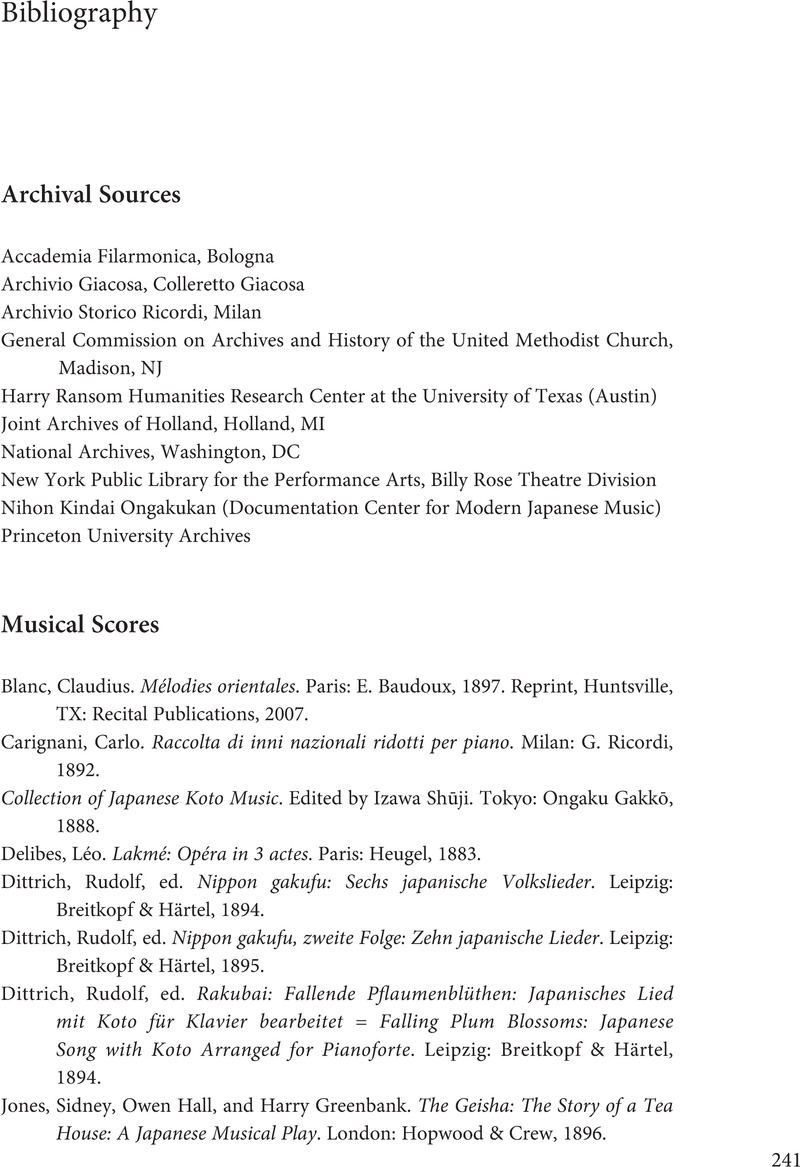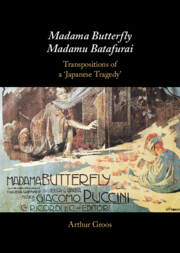Book contents
- Madama Butterfly/Madamu Batafurai
- Madama Butterfly/Madamu Batafurai
- Copyright page
- Dedication
- Contents
- Illustrations
- Musical Examples
- Preface
- Acknowledgments
- Note on the Text
- Abbreviations
- Introduction: “Marriage… in the Japanese Way”
- 1 Loti and Long – with an Eyewitness Account
- 2 Madama Butterfly: A Conflicted Genesis
- 3 Far West/Far East: Luigi Illica’s Libretto
- 4 Madama Butterfly between West and East
- 5 Returns of the Native: Madamu Batafurai in Japan
- 6 Returns of the Native: Imaginative Transpositions
- Brief Epilogue
- Bibliography
- Index (by Tanya Izzard)
- References
Bibliography
Published online by Cambridge University Press: 09 February 2023
- Madama Butterfly/Madamu Batafurai
- Madama Butterfly/Madamu Batafurai
- Copyright page
- Dedication
- Contents
- Illustrations
- Musical Examples
- Preface
- Acknowledgments
- Note on the Text
- Abbreviations
- Introduction: “Marriage… in the Japanese Way”
- 1 Loti and Long – with an Eyewitness Account
- 2 Madama Butterfly: A Conflicted Genesis
- 3 Far West/Far East: Luigi Illica’s Libretto
- 4 Madama Butterfly between West and East
- 5 Returns of the Native: Madamu Batafurai in Japan
- 6 Returns of the Native: Imaginative Transpositions
- Brief Epilogue
- Bibliography
- Index (by Tanya Izzard)
- References
Summary

- Type
- Chapter
- Information
- Madama Butterfly/Madamu BatafuraiTranspositions of a 'Japanese Tragedy', pp. 241 - 256Publisher: Cambridge University PressPrint publication year: 2023



